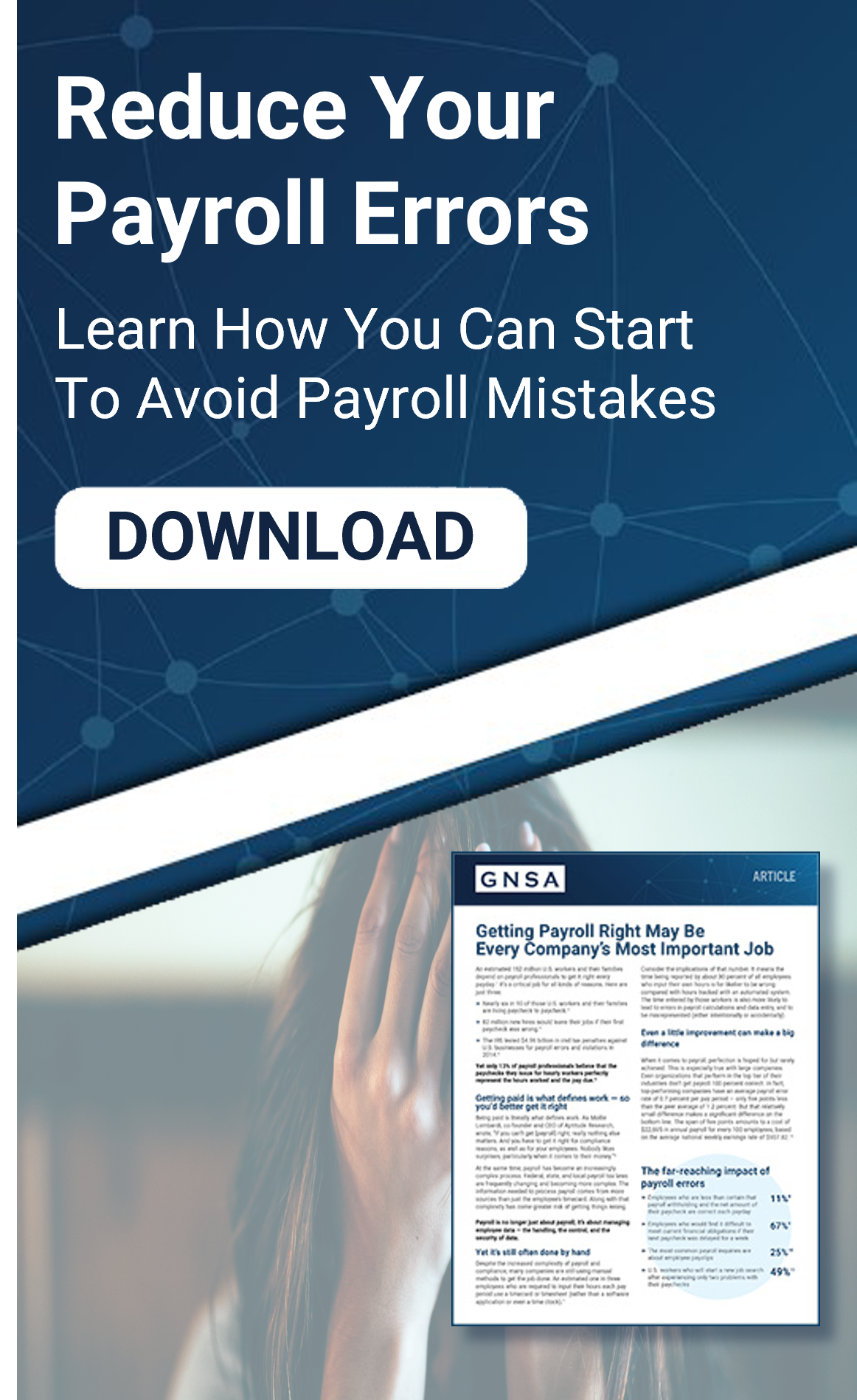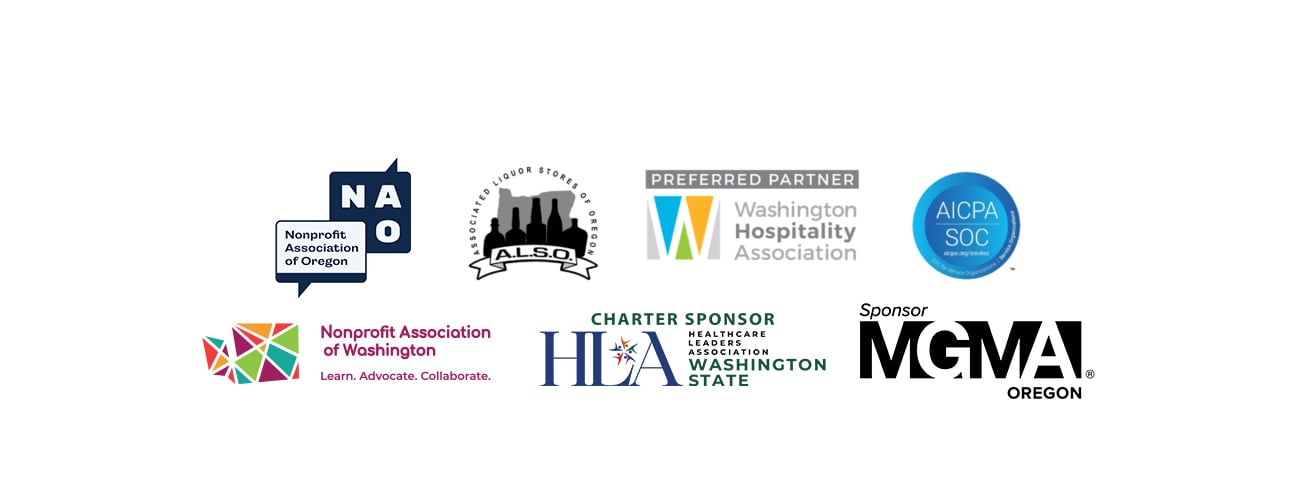Payroll is a critical function of your business operations, and it should be handled with great care. There is no room for error, as one small mistake can be costly to your organization. As such, it's important to be able to evaluate whether or not your payroll provider is taking good care of you, and it's important to know when it's time to make a change.
Here is everything you should know about switching payroll providers.
Check out the FAQ: Switching Payroll Providers to find a quick answer to some common questions on this topic.
A Checklist for Switching Payroll Companies
There are five core reasons that most businesses find they need a new payroll provider. And finding one you can trust is crucial for how to do payroll for a small business. It's important for businesses to continuously evaluate and monitor these five key areas of payroll, and if any one of them is experiencing challenges, bottlenecks, etc. it may be time to switch payroll providers.
These five areas are:
Payroll Errors
It's important for businesses to look for ways to avoid payroll errors, and getting set up with a trustworthy provider with an industry-leading solution is an important step toward doing so.
There are plenty of different types of errors that can be made when processing payroll. However, almost all of them result in the same thing, inaccurate paychecks.
Paycheck errors often start from supporting data sources that feed into the payroll system, such as time entry, deductions, benefits changes, unaccounted overtime, wage garnishments, and more. These things also happen when the support from your provider is lacking. Often response times are too slow, or the support rep is too "green" to help you.
The problem is a simple payroll error can hurt a business in more than one way. Companies not only incur the immediate cost of fixing the mistake, but they also risk longer-term erosion of engagement and productivity if employees lose confidence in the accuracy of their pay.
Payroll Productivity
Similar to why you want to avoid payroll errors, it's important that paychecks are delivered on-time. This is best achieved through an efficient and productive payroll process. Doubly so, because rushed processes, in an effort to deliver payroll on-time, lead to even more errors.
With today's staffing trends, budgets are often must tighter and as a result, payroll teams are often being downsized while also being pushed to streamline processes, eliminate manual systems, and reduce data entry.
It's important to find a solution that actually works for your organization, reducing hard costs like overtime, and soft costs like reducing your staffing need for payroll.
Self-Service Options
With today's modern workforce trends, it's a big deal if you don't have employee self-service options for tasks and such around payroll and HR. The ability to accomplish things like submitting tax and direct deposit information and viewing current and past pay statements right from their desktop or mobile device is something in high-demand, especially by younger workforce generations.
But, it's also in your organization's best interest.
Employee self-service capabilities increase payroll efficiency and productivity while contributing to a highly engaged workforce. By allowing employees to accomplish certain, more routine tasks on their own, you can reduce time-consuming administrative work for the payroll staff.
Cost of Current Payroll Processes
Many organizations may not realize the costs associated with their current system could add up to more than the cost of a proposed new payroll solution. The cost of your current system goes beyond just paying the people who process payroll, which increases with overtime costs due to sluggish processes.
Organizations should look at things such as:
- What software is used? How much does that cost?
- What IT support is needed? How much time of IT's day does that take up?
- Cost of in-house printers
- Education and training
- What time spent by payroll staff on processing?
With the implementation of industry-leading solutions, backed by proactive payroll support, the wrong payroll provider will ultimately cost you more money than you think.
Compliance Risk
The world of payroll involves an enormously challenging regulatory environment that cannot be easily managed with a manual or partially automated solution.
Especially in today's modern workforce, with so many remote and / or hybrid workers, companies are much more likely to find themselves with employees in multiple states. Yet that doesn't mean that these companies have the expertise in every legal and tax requirement in every state.
Companies should never find themselves out of compliance and should never be put in a position where they have to pay a hefty fine, deal with damages to credit ratings, and, in extreme cases, even imprisonment. This goes doubly so when you have a payroll provider who is supposed to have your back on these things.
Best Time to Switch Payroll Providers
The best time to switch payroll providers is once you've identified challenges in one of the previously mentioned areas of payroll.
Mistakes in these areas can be very unforgiving to your business, so you shouldn't have reservations about making a change because you are unhappy with "one small thing". Small things have big impacts when it comes to payroll.
Switching Payroll Companies Checklist
While making a change in your payroll provider starts with identifying challenges in the above areas, there are more steps involved than just that.
Here is a brief checklist on the steps for switching payroll companies:
- Identify Current Challenges
- Identify Key Areas for Improvement (a need for change)
- Identify Key Stakeholders (those will be most impacted by the change)
- Gain Support (show stakeholders how they'll benefit)
How to Switch Payroll Providers
Switching payroll companies isn't as scary as it may seem. Finding the right provider by taking into account everything discussed above is the first step, because the right provider will ensure a seamless transition, and a smooth onboarding and implementation.
At GNSA, we take it a step further, as your team that helps you transition, get onboarding, and get implemented, will stick with you as your regular support team, always there when you need it.
Contact us to learn more today.
Frequently Asked Questions About Switching Payroll Companies
What are the main reasons businesses switch payroll providers?
The five core reasons businesses typically switch payroll providers are: payroll errors, payroll productivity issues, lack of employee self-service options, high costs of current payroll processes, and compliance risks. Regular evaluation of these areas can help determine when it’s time for a change.
How can payroll errors impact a business?
Payroll errors can lead to inaccurate paychecks, which not only incur immediate correction costs but also risk long-term damage to employee trust and engagement. Errors often stem from poor data inputs and inadequate provider support, such as slow response times or inexperienced support staff.
Why are employee self-service options important in payroll systems?
Employee self-service features allow workers to manage routine payroll and HR tasks, like updating tax information or viewing pay statements, from their own devices. This reduces the administrative burden on payroll staff and improves overall efficiency and employee satisfaction.
How do current payroll systems impact overall business costs?
The costs of a current payroll system can extend beyond just payroll processing. They may include expenses related to software, IT support, printers, training, and staff time. A modern, efficient solution can reduce both hard and soft costs, making a new provider more cost-effective in the long run.
When is the best time to switch payroll providers?
The best time to switch providers is when you identify challenges in key payroll areas—errors, inefficiencies, costs, lack of self-service, or compliance risks. Even small issues can have significant consequences, so businesses shouldn’t delay a switch once a need is recognized.


.png)


